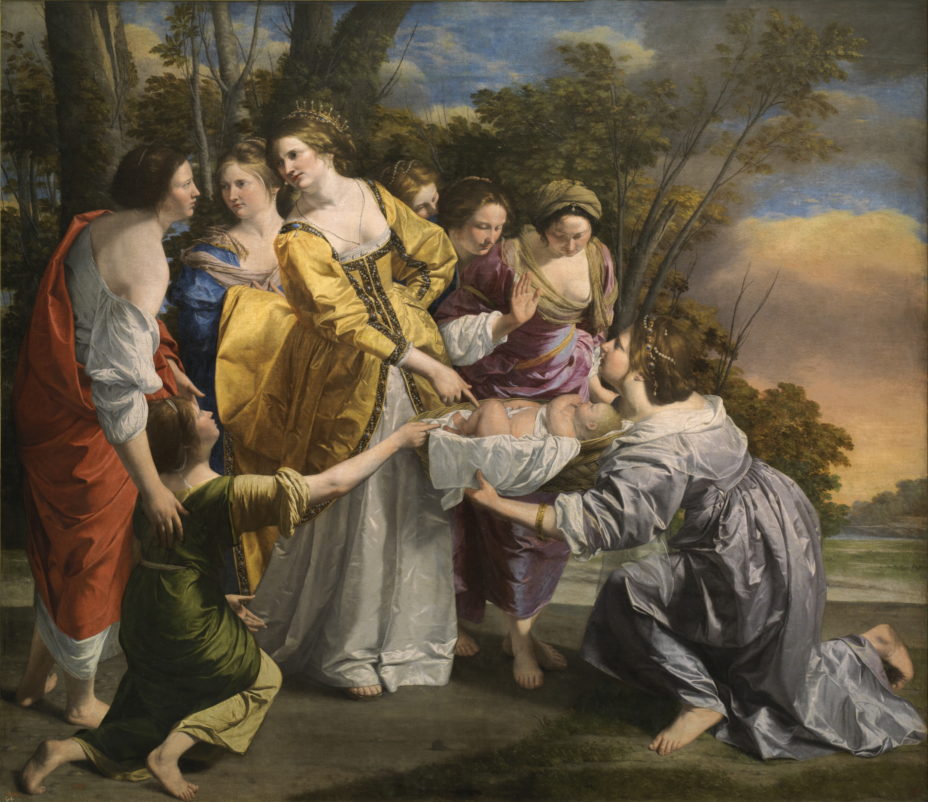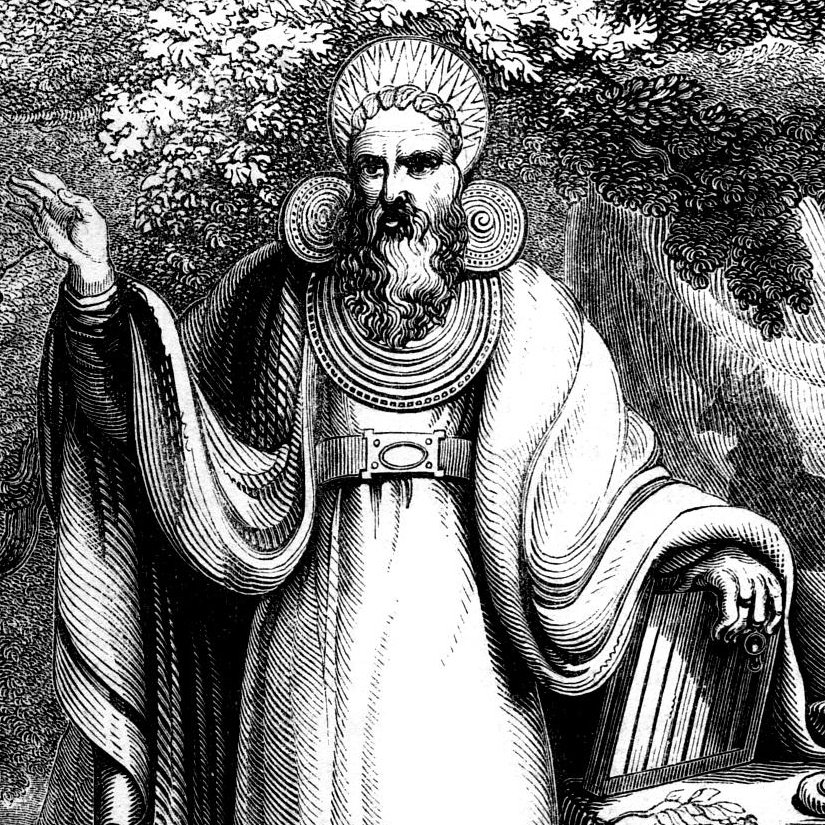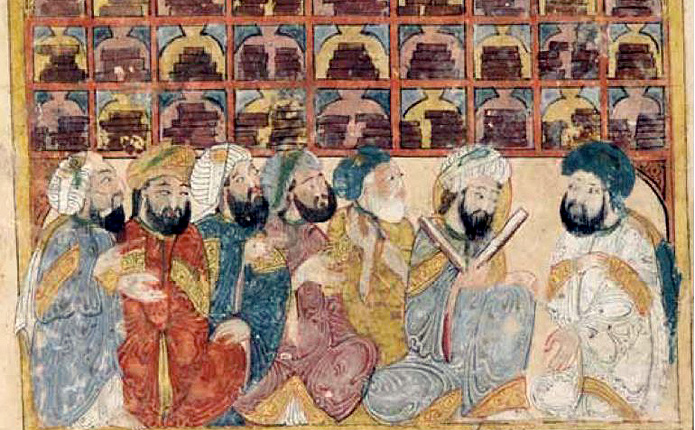It’s been well-known for over a century that the story of Moses has parallels in other ancient texts of the Ancient Near East. Specifically, some people have asserted that the story of Moses’ origins was lifted specifically from the official history of the first Akkadian king and the founder of the Akkadian Empire, Sargon of Akkad.
Sargon’s origin story is told in various texts, becoming more elaborate as time went on. This is one version:
Sargon, mighty king, king of Agade, am I. My mother was a high priestess [of Inanna], my father I knew not; My father’s brothers live in the mountains; My city is Azupiranu, situated on the banks of the Euphrates My mother, the high priestess, conceived me, in secret she bore me; She placed me in a basket of rushes, she sealed the lid with bitumen; She cast me into the river which did not rise over me; The river bore me up and carried me to Aqqi, the water-drawer. Aqqi, the water-drawer, lifted me out as he dipped his bucket; Aqqi, the water-drawer, adopted me, brought me up; Aqqi, the water-drawer, set me up as his gardener. As a gardener, Ishtar loved me; For 55 years I ruled as king.
In case you aren’t familiar with Moses’ story, the king of Egypt ordered that all the male children of the Hebrew be killed at birth our of fear of the numbers and strength of the Hebrew people. Here we pick up the story with the NIV translation:
2 Now a man of the tribe of Levi married a Levite woman, 2 and she became pregnant and gave birth to a son. When she saw that he was a fine child, she hid him for three months. 3 But when she could hide him no longer, she got a papyrus basket[a] for him and coated it with tar and pitch. Then she placed the child in it and put it among the reeds along the bank of the Nile. 4 His sister stood at a distance to see what would happen to him.5 Then Pharaoh’s daughter went down to the Nile to bathe, and her attendants were walking along the riverbank. She saw the basket among the reeds and sent her female slave to get it. 6 She opened it and saw the baby. He was crying, and she felt sorry for him. “This is one of the Hebrew babies,” she said.7 Then his sister asked Pharaoh’s daughter, “Shall I go and get one of the Hebrew women to nurse the baby for you?”8 “Yes, go,” she answered. So the girl went and got the baby’s mother. 9 Pharaoh’s daughter said to her, “Take this baby and nurse him for me, and I will pay you.” So the woman took the baby and nursed him. 10 When the child grew older, she took him to Pharaoh’s daughter and he became her son. She named him Moses, saying, “I drew him out of the water.”
Exodous 2:1-10 NIV
While some dishonest people like to promote the idea that the stories are almost identical (Zeitgeist the Movie goes so far as to outright fabricate the claim that in both stories, the mother sought to avoid infanticide, in both he was rescued by a princess, and in both he was raised as a prince!), there are strong similarities, nevertheless.
The differences are more profound. There’s the implication that Sargon was the bastard of a high priestess who abandoned him to keep her position (though if she actually kept her secret, it seems implausible that he’d know his real parentage). To ancient pagans, the river was a symbol of wild and raw chaos power–by giving him up to the river, Sargon’s mother would have been denouncing any kind of responsibility over his fate: let fate decide. And indeed, there’s no indication here of any sort of concern about his destiny on her part. As far as she knew, she was committing infanticide, but in a way that she could absolve herself of the certainty of the child’s doom. The mountains here, which are otherwise a bit obtuse (because again, if he doesn’t know who his parents are, why would he know his father’s people are mountain people?), actually has a vaguely divine reference–mountains were the dwelling place of certain gods, so he might be making a soft claim to a demigod sort of status.
From other sources, we know that Sargon was raised in the court of the king of Kish and became the king’s cupbearer. This position was similar to the groom of the stool in British history or the American presidents’ body man–a rather menial kind of job that nevertheless provided unparalleled access to the ruler and had many associated privileges. Because of the extreme closeness of the cupbearer to the kings of the Ancient Near East, it was a position that typically went to well-mannered youths without any kind of connections that would make them politically dangerous.
Aqqi would have been the personal water-drawer for the king; as a foundling raised at the court, with all the courtly graces, Sargon would have seemed the ideal cupbearer. (As Aqqi’s “gardener,” he probably maintained the irrigation system of the royal compound; obviously, Aqqi had a high position as well, despite his lowly title, to have a gardener under him.)
But despite their lowly origins, the political influence of cupbearers was a reoccurring problem, because cupbearers became a backdoor route to access the king, and in so doing, they could accrue enough power to eventually even displace the king. (In Israel, David occupied a similar position as Saul’s armor-bearer.) This is exactly what happened in the case of Sargon, who overthrew the king of Kish in a palace coup and set up a new center of power in the Kish-controlled city of Akkad, from which he conquered an empire–generally regarded as the first proper empire in the world.
This particular story comes only from an Assyrian cuneiform tablet that dates from the 600s BC. Moses lived around 1400 BC, while Sargon lived around 2300 BC. The Assyrian captivity of Israel is dated to about 740 BC, so even though Sargon lived long before Moses, this story is only recorded at a late date after substantial contact between the authors of the tablet and the Israelite people, and it could easily be that it was actually Moses’ story that was applied to Sargon.
However, I have no problem with the Sargon legend predating that of Moses, despite only having one source of a very late date…and I will explain why.
Every person in the Ancient Near East would have been familiar with Sargon of Akkad, who founded the first true empire in the history of Mesopotamia. He was more famous to the people of the Ancient Near East than either Caesar or Alexander the Great are to people today. (“Sargon” itself is a regnal name or a title, not a birth name; this king is almost certainly referred to as Nimrod in the Bible.) Moses’ mother was Semitic, with close ties to the Ancient Near East retained across generations. If Sargon’s story was of ancient origins, and if Moses’ mother felt forced to get rid of her male child, the story would have informed her actions. If Sargon was tossed on the river to die, how much better of a chance would her child have?
Moses’ mother did not simply put her baby in a basket and let the river take him. She hid the baby in the reeds, where the basket could not float away, right next to the royal palace, and she sent her daughter to look after the baby to make sure that nothing untoward happened to him. So if she was familiar with Sargon’s story, she would have been consciously reenacting it–in a safer way–in the hopes that her own child could have the same happy outcome despite his perilous situation that the king of Akkad had.
And, in fact, Moses was found by no less than an attendant of the daughter of the Pharaoh, who took him up out of the water at the princess’ command. Upon opening the basket, she realized that the baby was one of the Hebrews’ sons–because of the unique Hebrew practice of circumcision. She felt pity on him and arranged for a wet nurse from among the Hebrews (a woman who would be trusted not to share the secret of the child’s identity) and then raised him as if he were her own son.
Now, the daughter of the Pharaoh would have been informed not by a knowledge of Ancient Near Eastern history and legend. If she had been, she would have thought it was madness to save such a child. But she was, instead, informed by Egyptian mythology. One of the central myths of Egypt, which became much more important in the Middle and New Kingdom, involved the casting of a god into the Nile: myth of Osiris’ murder and resurrection. Osiris, the king of the gods, is killed by his brother Set, and his body is tossed into the Nile–in later versions, chopped into the pieces. Osiris’ queen Isis hunts for the pieces and finds all of them except for his penis. She puts them together and reanimates him, which allows him to become the king of the dead in the underworld. However, despite this lack, Isis reconstructs his penis with magic and is able to conceive Horus, who becomes Osiris’ successor among the gods over the overworld. This legend was so influential that bodies of people who drowned in the Nile were considered sacred, and some Egyptian priests eventually began having a slice made into their foreskin to symbolize Osiris’ loss upon their accession to certain priesthoods.
To an Egyptian princess, then, there would be something highly religiously significant about finding a baby on the river–and that the baby was missing a small piece of its penile skin would seem even more of a divine sign. Even though the obvious explanation was that he was a Hebrew baby abandoned by a mother unwilling to give him over to be killed, the spiritual significance of the discovery could easily convince the princess that to not rescue the child would be tantamount to blasphemy, regardless of the orders given to kill such children. With this justification for her pity, she could have easily excused her defiance of her father, as well as her interest not only in saving the child but her special interest in raising him as her son. (The Hebrew states, translated hyper-literally, that “he was to her for a son”–this does not necessarily mean either a literal adoption or any sort of fakery, but it does mean that she loved him and treated him like she would a son.)
This act would have also cast the princess in the role of Isis, the queen of the gods–this would be very appealing to an Egyptian princess by the early New Kingdom, because through long tradition, inheritance was sometimes determined through a princess. If a pharaoh wanted a certain person to inherit who was not the son of his chief wife, he could legitimize his heir’s status by marrying him to a daughter of his chief wife. These marriages were usually between half-siblings, but they were sometimes even between a princess and a noble who was not the son of the present pharaoh. The importance of Isis began to grow in the Middle Kingdom and became very significant during the New Kingdom, which was when Moses would have lived.
We have, then, two very different views of the image of a baby on a river that was informed by the society in which each of the women lived–one from the point of view of a Hebrew woman familiar with Akkadian history, and another from the point of view of an Egyptian princess. Both make the actions of the respective women make perfect sense in their different circumstances, and both fit into the context of the Hebrew people sojourning in Egypt.






